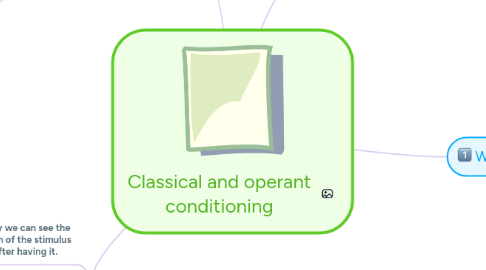
1. Operant conditioning
1.1. Applies the way to remove some stimulus after having something and return that stimulus in order to reward.
1.1.1. Example
1.1.1.1. A child wants to play with his friend first he has to do the homework.
1.1.2. In this way the child understands that in order to have something first he has to perform a task to get what he wants in the form of reward.
2. Classical Conditioning
2.1. In this way we can see the reaction form of the stimulus before and after having it.
2.1.1. Unconditioned Stimulus
2.1.1.1. Our favorite object is our encouragement.
2.1.2. Unconditioned Response
2.1.2.1. Our reaction to the stimulus.
2.1.3. Neutral Stimulus
2.1.3.1. Way to indicate that our stimulus is close.
2.2. Example
2.2.1. Fear response: Albert was a boy in an experiment where a fear response was conditioned. Initially, the boy did not fear a white rat. The rat was paired or associated with loud and scary noises and the boy then became fearful of the rat and other white fuzzy objects.
3. What is conditioning
3.1. Link of a learning or reaction of stimuli of a human.
4. How do we influence behavior
4.1. Reinforcement or punishment
4.2. Positive or negative
4.3. 4 different ways we can affect behavior
4.3.1. negative reinforcement - positive reinforcement
4.3.2. negative punishment - positive punishment
